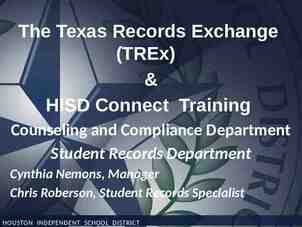FORENSIC ANTHROPOLOGY Let the bones tell the story!
33 Slides7.99 MB
FORENSIC ANTHROPOLOGY Let the bones tell the story!
CHAPTER 14 VOCABULARY biological profile diaphysis epiphysis forensic anthropology growth plate (epiphyseal plate) joints ossification osteoporosis skeletal trauma analysis
INTRODUCTION Anthropology – the study of the origin, behavior, social, cultural, and physical development of humans Forensic anthropology – applied anthropology that specializes in the changes and variations in the human skeleton for the purpose of legal inquiry Kathy Reichs (2.40) https:// www.youtube.com/watch?v L101Bvj0lAA
INTRODUCTION A forensic anthropologist may provide basic identification information of skeletonized or badly decomposed remains (biological profile). From a whole bone or part of a bone, the scientist may be able to determine: an age range sex race approximate height cause of death, disease, or anomaly
HISTORICAL DEVELOPMENT In 1878, The Identification of the Human Skeleton: A Medicolegal Study was published. In 1895, the first known use of craniofacial superimposition was used to identify the remains composer Johann Sebastian Bach. In 1932, the FBI opened its first crime lab. In 1977, the American Board of Forensic Anthropology (ABFA) was established. In 2014, an anthropology subcommittee of OSAC was established to standardize recovery and analysis of human remains.
CHARACTERISTICS OF BONE Bones provide the framework for our bodies anchor our muscles to allow movement protect our vital organs A joint is the location where bones meet. cartilage – wraps the ends of the bones for protection ligaments – bands of tissue connecting two or more bones tendons – connect muscle to bone
NUMBER & DEVELOPMENT OF BONES A baby has 270 bones. Adults have 206 bones. For some bones, ossification takes more than 50 years. epiphysis – the “caps’ of the long bones diaphysis – shafts of the bones epiphyseal plate (growth plate) – cartilaginous area between the caps and shaft
Directions: Identify the bones in the skeleton. One label will be used twice! Cranium Cervical Vertebrae Sternum Humerus Ulna Clavicle Scapula Ribs Lumbar Vertebrae Ilium Radius Carpals Ishium Metacarpals Phalanges Femur Sacrum Patella Tibia Fibula Tarsals Metatarsals Phalanges
Quick Quiz – Give the common name for each bone. I should have known it was going to be one of those days, when I had stepped out of bed and stubbed my (1) PHLANGE on the night stand. While hopping up and down on one (2) METATARSAL and grasping the other, I slipped and fell onto my right shoulder breaking my (3) CLAVICLE. As I crawled on my (4) METACARPALS and (5) PATELLAS to my bed, I felt my (6) CRANIUM begin to ache. I found my phone and let my (7) PHLANGES do the walking as I called my friend to come help me out. My friend answered the phone with a loud scream; my (8) MANDIBLE dropped, I asked what had happened, and he replied that he had been startled by the ringing phone, fell out of bed landed on his (9) COCCYX. Following that while racing to the phone he hit his (10) TIBIA on a stool. I should have known it was going to be one of those days. 1. TOES 2. FOOT 3. COLLAR BONE 4. HANDS 5. KNEES 6. SKULL or HEAD 7. FINGERS 8. LOWER JAW 9. TAIL BONE 10. SHIN
BONES AND BIOLOGICAL PROFILES Bones contain a "diary” of injuries, disease, and nutritional deficiencies. broken bones osteoarthritis osteoporosis rickets – lack of vitamin d severe anemia – lack of iron cancer
BONES AND GEOGRAPHY Bones indicate were you have eaten your food. strontium carbon-13 carbon-12
HOW TO DISTINGUISH MALES FROM FEMALES First question asked – male or female? The overall appearance of the adult female’s skeleton tends to be more slender than that of an adult male’s skeleton. Muscles tend to be more developed in the male. The determination of sex by skeletal remains can only be done if the deceased is passed puberty.
HOW TO DISTINGUISH MALES FROM FEMALES - SKULL
HOW TO DISTINGUISH MALES FROM FEMALES - SKULL
HOW TO DISTINGUISH MALES FROM FEMALES - SKULL
HOW TO DISTINGUISH MALES FROM FEMALES – PELVIS Examining the pelvis is one of the most reliable methods of determining the sex of an adult skeleton.
HOW TO DISTINGUISH MALES FROM FEMALES – PELVIS
HOW TO DISTINGUISH MALES FROM FEMALES – PELVIS
HOW TO DISTINGUISH MALES FROM FEMALES – PELVIS To distinguish between the male and female pelvis, compare the following: subpubic angle length, width, shape, and angle of the sacrum width of the ilieum angle of the sciatic notch
AGE DETERMINATION Most estimations come from: teeth epiphyses - growth plates on long bones pubic symphysis cranial sutures: the three major cranial sutures appear as distinct lines in youth and gradually close from the inside out. Investigators always use an age range because of the variation in people and how they age. The investigator does not want to eliminate any possibilities for identification.
AGE DETERMINATION – OSSIFICATION
AGE DETERMINATION – TEETH
AGE DETERMINATION – SKULL SUTURE MARKS
AGE DETERMINATION – SKULL SUTURE MARKS
DETERMINING ANCESTRY Determining ancestry from skeletal remains is difficult shape of eye sockets shape of nasal cavity nasal index – ratio of width of the nasal opening to the height of the opening x 100 prognathism – projection of the upper jaw and/or the lower jaw beyond the face
DETERMINING ANCESTRY
ESTIMATING HEIGHT Many databases have been established that use mathematical relationships to calculate height from long bones
SKELETAL TRAUMA ANALYSIS Skeletal trauma analysis is the process by which a forensic anthropologist attempts to distinguish between damage to bones made during life and damage to bones caused by the environment in organisms after death. Living bone is stronger and more flexible than dried-out dead bone Weapons leave distinguishing patterns sharp-force trauma blunt-force trauma gunshot wounds
EXAMINING REMAINS Questions a forensic anthropologist may ask: 1. Is a fragment a bone? 2. Is it a human or animal bone? 3. Which bone is it? 4. Does the gravesite contain remains from one person or more? 5. How long have the remains been buried? 6. Were the markings on the bones made before death (antemortem) or after death (postmortem)
SKELETAL ANALYSIS AND IDENTIFICATION Comparative Radiography Non-imaged Records Comparison DNA Analysis Photographic or Video Superimposition Craniofacial Reconstruction
FACIAL RECONSTRUCTION Purpose is to give proportion to facial features After determining the sex, age, and race of an individual, facial features can be built upon a skull to assist in identification. (math formulas and computer databases create facial mask) Erasers are used to make tissue depths at various points on the skull. Clay is used to build around these markers and facial features are molded.
STEPS IN FACIAL RECONSTRUCTION With a Skull: establish age, sex and race plot landmarks for tissue thickness plot origin and insertion points for muscles plot landmarks for facial features select a dataset and mount markers for tissue thickness mount the eyes model muscles on skull add fatty tissue around eyes and lacrimal glands add eyelids add the nose add the parotid gland add the ears cover all with layers of skin detail the face
THE BODY FARM Bill Bass is a forensic anthropologist who has assisted law enforcement with hundreds of cases. He established the world’s first and only laboratory devoted to the study of human decomposition at the University of Tennessee’s Anthropology Research Facility. The nickname of a two and a half acre research facility in Tennessee developed in 1980 by Bill Bass where bodies are placed in various conditions and allowed to decompose. Its main purpose is to observe and understand the processes and timetable of postmortem decay. Over the years it has helped to improve the ability to determine "time since death" in murder cases. Hic locus est ubi mortui viveuntes docent. This is the place where the dead teach the






































